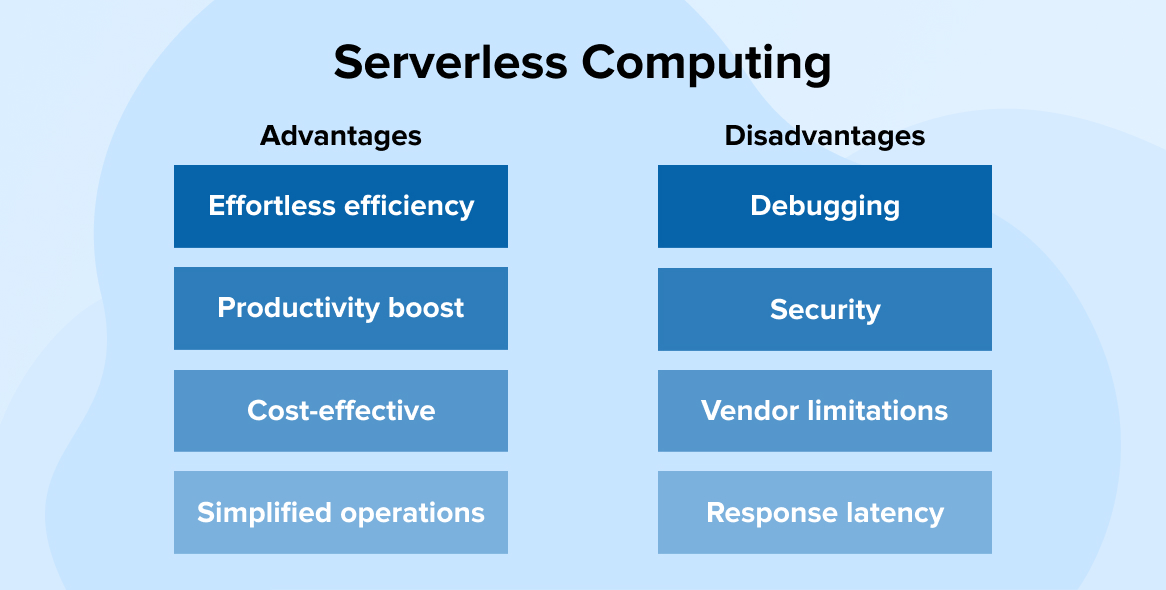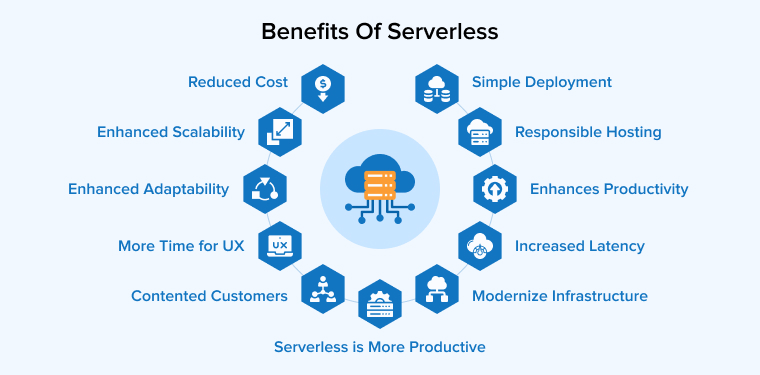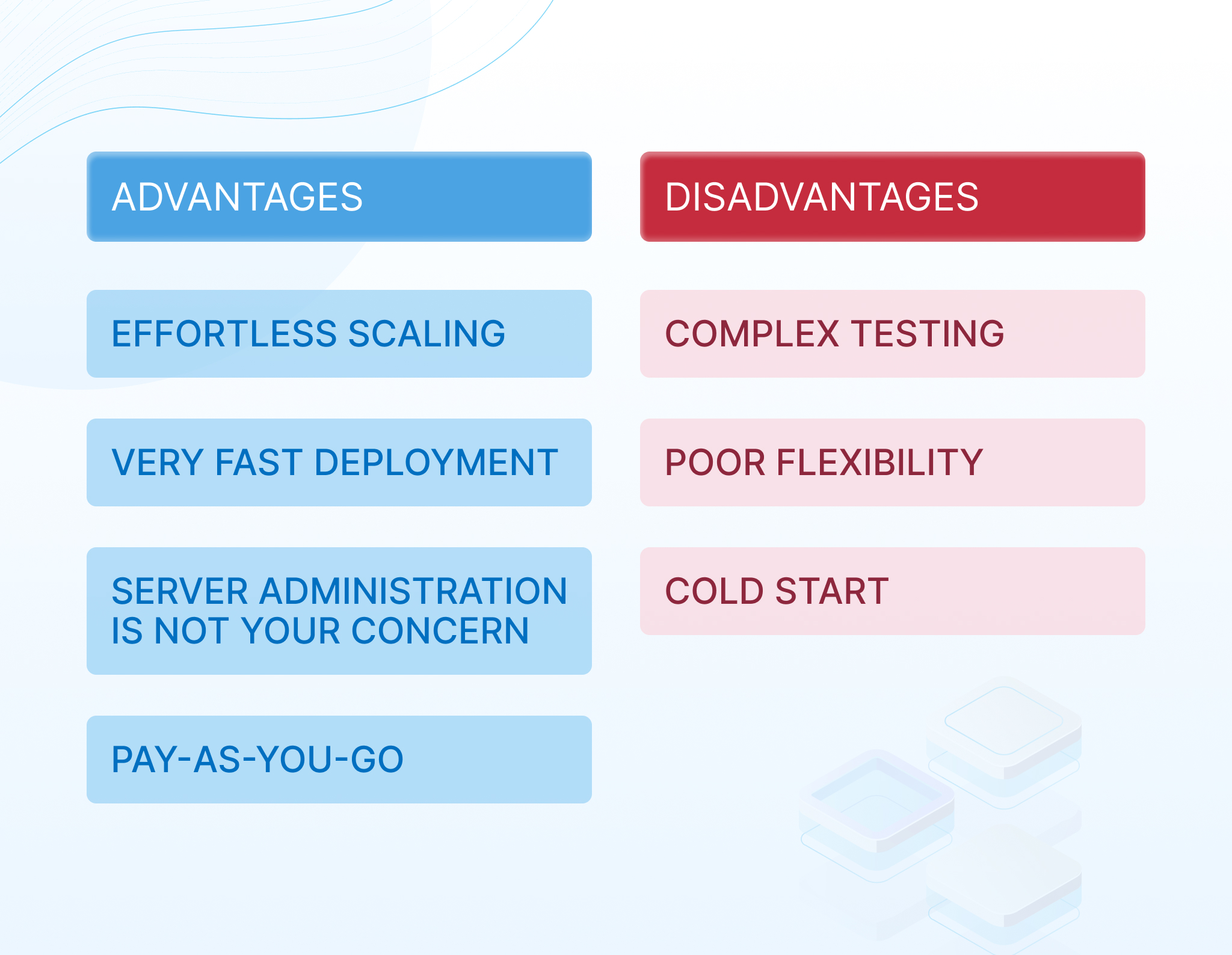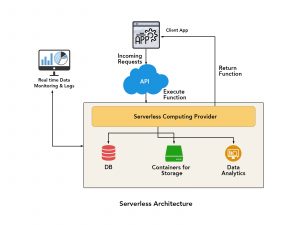
Overview of Serverless Architecture
Definition and Explanation of Serverless Architecture
Serverless architecture, despite its name, doesn’t imply the absence of servers. Rather, it refers to a cloud computing model where developers focus entirely on writing code without worrying about the underlying infrastructure. In this model, cloud providers, such as AWS, Azure, or Google Cloud, automatically manage the server resources, scaling them according to demand.
This means that developers can deploy functions, also known as “serverless functions,” that execute in response to events without needing to provision or maintain dedicated servers. For example, a developer could easily create a function to process images uploaded to a website. The beautiful part of serverless architecture is that resources are allocated dynamically based on traffic, making it incredibly efficient.
Key Features of Serverless Architecture:
- Event-driven: Functions are triggered by specific events like HTTP requests or file uploads.
- Automatic Scaling: Resources scale automatically as demand increases or decreases.
- Pay-per-use: Customers pay only for the compute time they consume, eliminating the need for upfront resource provisioning.
Evolution of Serverless Computing
The journey to serverless computing is fascinating, as it represents a significant shift in how developers and organizations approach application development. Initially, traditional hosting models required developers to rent and manage physical servers. This not only made the time to market longer but also added considerable operational overhead.
With the rise of cloud computing in the early 2000s, platforms like Amazon Web Services began to offer Infrastructure as a Service (IaaS), allowing developers to rent virtual machines instead. However, this still required management of the operating systems, updates, and scaling.
The real revolution came around the mid-2010s when AWS Lambda was launched, paving the way for what we now call serverless technologies. Companies saw the potential for radically lowering operational costs and speeding up deployment. Moreover, the rise of microservices architecture played a pivotal role in driving this evolution.
In essence, serverless architecture has evolved from a reactive approach of handling server resources to a proactive, event-driven model that empowers developers to concentrate on what they love—coding. This evolution not only streamlines development but also enhances innovation, paving the way for exciting possibilities. Exciting times lie ahead for businesses adopting serverless solutions, as highlighted here at TECHFACK.

Benefits of Serverless Architecture
The advantages of adopting serverless architecture cannot be overstated. As organizations transition from traditional models to serverless, they unlock a treasure trove of benefits that help streamline operations, cut costs, and enhance innovation. Let’s explore these facets more closely.
Cost-effectiveness and Scalability
One of the most significant advantages of serverless architecture is its cost-effectiveness. With a traditional infrastructure model, businesses often bear the burden of paying for unused compute resources. However, serverless computing operates on a pay-per-use model. This means companies only pay when their functions are actively executing, drastically reducing infrastructure costs.
- Example: A small startup hosting a web application may see costs plummet from a fixed monthly server rental to just paying for the compute time of actual user requests. This flexibility allows startups to allocate more resources to development and growth rather than infrastructure management.
Scalability is another key benefit. Serverless architectures automatically scale up or down depending on demand. For instance, during a sudden spike in users accessing an application, serverless functions can quickly spin up additional resources to handle the load and return to a minimal state in low-demand times.
Reduced Operational Complexity
Serverless architecture simplifies operations by abstracting away the underlying infrastructure management. This reduction in operational complexity means that teams can focus on writing code rather than managing servers, updates, or security patches.
- Bullet Points to Consider:
- No dedicated DevOps team required to manage infrastructure.
- Automatic patches and updates provided by cloud service providers.
- Simplified resource management leads to fewer errors and downtime.
Increased Flexibility and Agility
Additionally, serverless computing promotes increased flexibility and agility. Developers can deploy updates and new features rapidly, allowing businesses to respond to market changes and user feedback more promptly.
A personal anecdote captures this well. A friend recently used a serverless solution to roll out a new feature for their mobile app. What usually took weeks of deployment, testing, and server preparation was accomplished in just a few hours. With the ability to deploy code safely and efficiently, the development team could focus more on enhancing the user experience instead of being bogged down in infrastructure intricacies.
In summary, the benefits of serverless architecture are profound. Companies can achieve cost savings, reduced complexity, and improved flexibility—all contributing to a more dynamic and innovative environment, as thoroughly discussed here at TECHFACK.

Drawbacks of Serverless Architecture
While the allure of serverless architecture is strong, it’s essential to weigh the drawbacks before jumping in headfirst. Understanding these challenges can help organizations plan effectively and mitigate potential issues down the line.
Potential Performance Issues
One of the most significant concerns surrounding serverless architecture is the potential for performance issues. For instance, the cold start problem occurs when a function that hasn’t been recently used takes longer to initialize. This lag can lead to increased response times and may be detrimental to user experience, particularly for applications requiring swift actions.
- Example: Imagine you have an e-commerce site, and a customer clicks to view a product. If the function responsible for loading product details experiences a cold start, the delay could frustrate users, potentially leading to abandoned carts.
To combat this, organizations need to design their applications smartly, leveraging techniques like pre-warming functions or minimizing cold start occurrences, especially during peak traffic times.
Vendor Lock-in Concerns
Another challenging aspect of serverless architecture is the potential for vendor lock-in. When businesses build their applications on a specific cloud provider’s platform, migrating to another provider can become complex and costly.
- Considerations:
- Each provider offers proprietary features and languages, making it challenging to switch without rewriting functions.
- Organizations may find themselves dependent on vendor services, making it difficult to move away later.
Real-life experiences highlight this issue; many companies share stories of the hefty resource investments required to retool their applications when switching providers. It often becomes a daunting task, causing hesitation for organizations considering serverless.
Monitoring and Debugging Challenges
Lastly, monitoring and debugging serverless applications can be more complex compared to traditional architectures. Since functions can be distributed across different services, tracking performance and troubleshooting issues can become a laborious task.
- Challenges Include:
- Limited visibility into function executions.
- Difficulty in replicating production environments for testing.
- Lack of standardization in logging and metrics across different service providers.
Developers often find themselves relying on external monitoring solutions to bridge these gaps, which can add complexity and costs. For example, a friend of mine who recently migrated to a serverless system struggled with debugging after a deployment. It took considerable effort to determine which function caused the failure, wasting valuable time those developers could have spent innovating.
In conclusion, while serverless architecture presents some drawbacks, being aware of them allows organizations to navigate the landscape more effectively. By proactively planning for performance issues, vendor lock-in, and monitoring challenges, businesses can optimize their serverless journey, as highlighted in discussions here at TECHFACK.

Use Cases and Applications of Serverless Architecture
As businesses navigate the realm of serverless architecture, they quickly discover a variety of compelling use cases that demonstrate its versatility and effectiveness. From web development to complex data processing tasks, serverless architecture is enriching applications across the board. Let’s explore these use cases further.
Web and Mobile Applications
One of the most popular applications of serverless architecture is in web and mobile development. Developers leverage serverless functions to handle backend processes, user authentication, and API requests without managing servers. This not only speeds up the development process but also enables teams to deliver features faster.
- Example: Consider a mobile app that allows users to upload photos. Instead of building and maintaining an entire backend server, developers can create serverless functions to handle image processing, storage, and delivery seamlessly.
Additionally, scaling becomes effortless. If an app experiences a sudden spike in users—say during a major promotional event—the serverless framework automatically adjusts the resources, ensuring smooth performance.
IoT Solutions
The Internet of Things (IoT) is another domain ripe for serverless architecture. In IoT scenarios, numerous devices generate massive amounts of data that must be processed in real time. Serverless computing enables developers to build applications that can quickly respond to data changes without managing the underlying infrastructure.
- Key Benefits:
- Real-time processing: Serverless functions can be triggered by events from IoT devices, instantly analyzing data and triggering actions.
- Cost-effective: Organizations can handle sporadic workloads without maintaining continuously running servers.
For instance, a smart home application could use serverless functions to process information from sensors, such as adjusting lighting based on occupancy. By employing serverless architecture, developers can effectively manage these real-time data streams and enhance user experiences.
Data Processing and Analytics
A third area where serverless architecture shines is in data processing and analytics. Businesses continuously generate vast quantities of data, and serverless solutions simplify the process of extracting, transforming, and loading (ETL) this data for analysis.
Organizations can create serverless functions to process data in batches or in real-time, enabling faster analytical insights.
- Advantages Include:
- Scalability: As data inflow increases, functions automatically adjust to handle the load.
- Cost Optimization: Companies pay only for the resources consumed by data processing tasks.
Picture a financial services firm that needs to analyze transaction data in real time to detect fraud. Using serverless architecture, they can deploy functions that automatically review transactions and alert teams to suspicious activities instantly.
In summary, the applications of serverless architecture are wide-ranging and impactful. From web and mobile applications to IoT solutions and data processing, serverless is revolutionizing how organizations operate, as discussed in detail here at TECHFACK. By applying this innovative approach, businesses can unlock new levels of efficiency and agility.

Considerations for Adopting Serverless Architecture
While the benefits of serverless architecture are enticing, there are several critical considerations to evaluate before making the switch. Detailed planning is essential to ensure successful implementation and avoid potential pitfalls. Let’s look at these considerations in more depth.
Security and Compliance Considerations
Security is a paramount concern when transitioning to a serverless architecture. Since serverless functions run in the cloud, sensitive data might be exposed if proper security measures are not in place.
- Key Points to Consider:
- Access Control: Implement strict access policies to limit who can trigger and manage functions.
- Data Encryption: Ensure that data is encrypted both in transit and at rest. This is particularly crucial for industries like healthcare and finance, which are subject to strict compliance regulations.
- Regular Audits: Conduct security audits and vulnerability assessments to identify and mitigate risks.
One of my colleagues shared a story about a startup that overlooked proper access controls, resulting in unauthorized access to sensitive data. Learning from this experience emphasized the importance of security measures for any new architecture.
Integration with Existing Systems
Another critical factor to consider is how serverless architecture integrates with existing systems and processes. Businesses likely have legacy systems that may not directly align with a serverless model, and connecting these can prove challenging.
- Considerations for Integration:
- APIs and Middleware: Use APIs and middleware solutions to connect serverless functions with existing databases, applications, and services.
- Migration Strategies: Plan how to gradually migrate workloads to serverless functions without disrupting operations.
- Testing and Validation: Before fully integrating, conduct thorough testing to ensure seamless communication between serverless applications and legacy systems.
For example, a retail company I know started integrating their inventory management system with a serverless order processing function. While they expected a straightforward setup, they faced unexpected challenges requiring innovative solutions.
Team Skillset and Training Needs
Finally, organizations must assess their team’s skillset and training needs before adopting serverless architecture. The shift may require new knowledge in cloud services, function programming, and event-driven architecture.
- Focus Areas for Training:
- Serverless Frameworks: Familiarize teams with the specific serverless tools and platforms, such as AWS Lambda or Azure Functions.
- Best Practices: Educate developers on best practices for writing efficient, serverless code.
- Cloud Security: Provide training on cloud security principles, as data protection is critical in a serverless environment.
A friend working in tech found that upskilling their team was the key to a successful transition. By investing in training and resources, their collaboration improved significantly, enabling smoother project executions.
In conclusion, while serverless architecture offers numerous benefits, careful consideration of security, integration challenges, and team readiness is crucial. By thoroughly addressing these aspects, organizations can optimize their serverless journey and achieve successful outcomes, as discussed here at TECHFACK.

